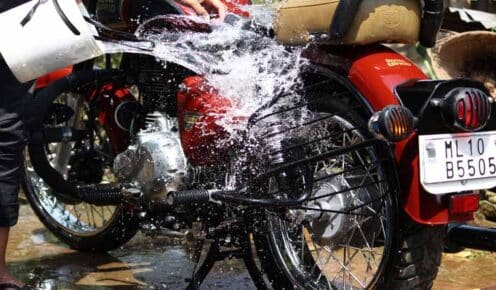A diamond is unquestionably timeless. It is not simply another piece of jewellery to be worn at special events; it is the hardest rock on the planet and one of the most beautiful stones. They offer grace and elegance to your persona, capturing pure magnificence and adding attractiveness to your personality. And since the gem lasts virtually for eternity, the beautiful stone symbolises an everlasting bond.
So, the engagement rings (ERs) can be classified into the following categories:
- Solitaires ER
This couple band, the most conventional form of ER, is ideal for individuals who prefer to keep things simple and elegant. A solitaire ER features a single diamond set on the band’s top. It is designed in such a way that the focus falls entirely on the centre stone. And, for the diamond to appear larger, this timeless classic is usually created with narrower bands. Other varieties include thicker bands or ring guards surrounding the centrepiece, making it appear more prominent and distinct.
- Pavé ER
These have a higher proportion of diamonds and show less metal. These ERs have tiny diamonds studded along with the metal band, giving the impression that the entire jewellery comprises diamonds. The metal part is generally hidden since the diamonds are held in place by beads or prongs, and this trendy ER’s centre stone is usually round or princess cut.
- Channel Set ER
Channel set engagement rings have no prongs. The diamonds are set in channel-like grooves that run between two metal strips. These embedded diamonds on the side, which come in a range of cuts and shapes, help give the centre stone a much bolder look.
- Sidestones ER
The side stone matches the diamond in the centre in the same way that you compliment your partner. On either side of the primary gem, two (or one) diamonds are usually accompanied by side stones in solitaire rings. The side stones enhance the jewellery’s brilliance, increasing its radiance and adding to the overall cost of your ER.
- Three Stones ER
The Three Stone Engagement or Wedding Rings are perfect for individuals who want a little more bling on their hands. In this style of ER, the centre stone is flanked on each side by two more diamonds. For drawing attention towards the centre stone, it is set somewhat higher than the other two diamonds. And a higher-quality centre stone influences the band budget. Moreover, round cut or princess cut diamonds are favoured for the centre diamond, and they are also available in a couple of bands.
- Tension Sets ER
It’s a modern and one-of-a-kind ring setting with no prongs in which the centre diamond is held in place by the setting’s physical force, giving the impression that the diamond is suspended or floating in the air. Meanwhile, the stone is held in place by the force and tension of the ring, as the name implies. Round, princess, and emerald-cut diamonds are popular alternatives for these types of jewellery.
- Halo ER
Halo ERs are similar to pavé ERs in that they require an equivalent level of craftsmanship. A micro-pavé setting in a halo configuration surrounds the central gemstone in this design. The jewellery’s radiance and brightness are enhanced by the lesser diamonds that surround it. And the popular selections include Asscher-cut diamonds, pear-shaped diamonds, and oval diamonds.
- Weddings Sets
Wedding sets usually consist of a matching set of ERs and wedding rings. The bride’s and groom’s rings are carefully coordinated to ensure that the rings complement each other perfectly.












